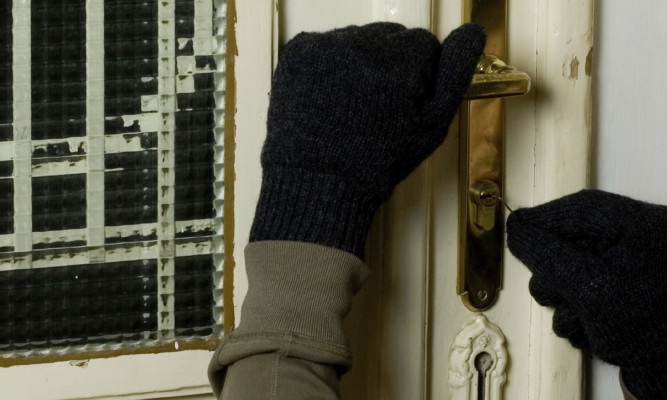A trio of serial housebreakers carried out 80 crimes in Dundee, The Courier has learned.
Working together three individuals broke into homes, sheds and cars, but have now been brought to justice after a police crackdown.
The number of criminals caught housebreaking in the city is at a five-year high, according to a senior police inspector, after police stepped up efforts to tackle the crime.
Chief Inspector David McIntosh said: “People should feel safe in their own homes, and even if it is not a house that is broken into, but a shed or garage, the thought that someone is skulking around in the garden does unsettle people.”
Most of the focus has been around the Coldside and Strathmartine wards, which had some of the highest reports of such crime this period, but Mr McIntosh said this was spilling out into other areas as well.
He said: Some of the people who were caught in Coldside and Strathmartine were actually going into the Ferry to commit crimes as well.
“The Ferry has a low rate of housebreaking overall, but if we catch them elsewhere it also prevents criminals from going into other areas.
“Eighty recent crimes have been attributed to three individuals who were working together to break into houses, sheds and some cars.”
Thieves who broke into sheds and outbuildings are often harder to catch due to a lack of evidence left behind.
A lack of clean surfaces make it difficult to take fingerprints, in the case of the three serial housebreakers, it was that traditional policing that led to their capture.
This includes intelligence gathering, patrols in hotspot areas, visiting known offenders as well as recovering stolen property.
Mr McIntosh said detection rates, the number of crimes for which someone is caught, for the three-month period from April to June this year are the highest they have been in the past five years.
He said: “This has been achieved in part by a targeting of the most prolific known offenders.
“There are people we know. We have priority locations and known prolific offenders. We know when they are coming out of prison.
“You can have the most effective police force in the world but if fear of crime is high you are failing people.”
